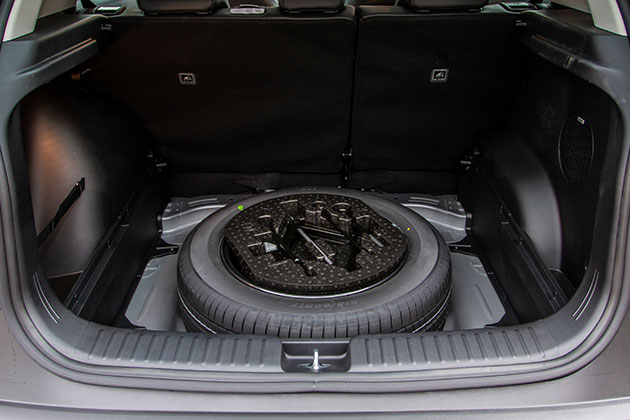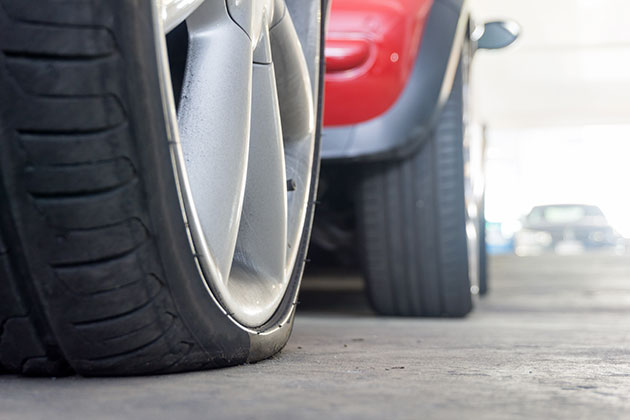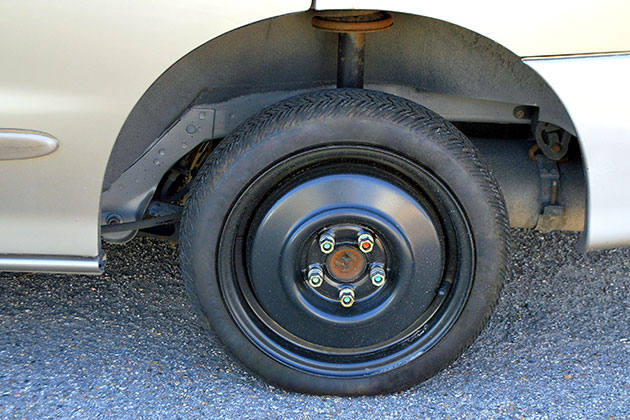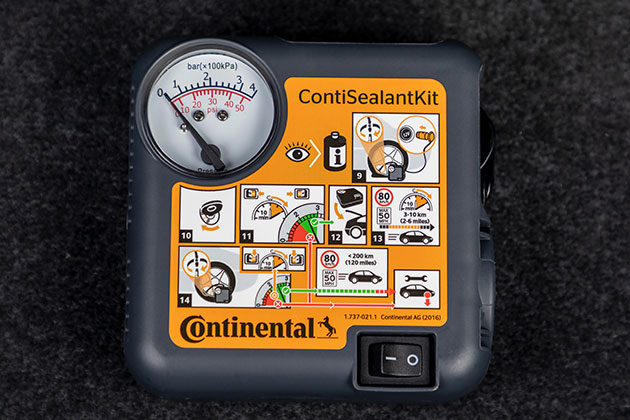By: Ryan Suckling
A full-sized spare wheel and tyre used to be the only sort of spare you’d find in the boot of a car, but not anymore. Many car manufacturers are now choosing not to supply a full-size spare to reduce the vehicle’s weight, create more cargo space and cut down on production costs.
But not all the alternatives are created equal, and for drivers in Western Australia, getting stranded on a remote country road without a proper spare is far from ideal.
Getting a flat tyre is far less likely than it was in decades gone by, due to major improvements in tyre technology. However, it’s important to be aware of the type of spare tyre you have, and to also bear this in mind when looking for a new car.
RELATED:
How to change a flat tyre »
RELATED:
Common mistakes made when changing a tyre »
If you’re planning a road trip and you’ve never checked your spare, check it before you leave so you know what you’re up for in the event of a flat. At the very least, it’s important to check that your spare tyre is in serviceable condition and inflated to the correct pressure.

Run flat tyres
Introduced by the likes of BMW, run flat tyres can save you having to replace a flat with a spare on the roadside. On vehicles fitted with four run flat tyres they look like a standard full-size tyre, but the run flat is able to support the weight of the vehicle and be driven on for limited distances. Run flats are very handy when the tyre suffers a small puncture, but not so much when the tyre suffers major damage and can’t be driven on at all.
There are two forms of run flat tyres, the first is self-supporting with bolstered sidewalls, and the second features a support ring system that maintains the tyre’s integrity in the event of lost air pressure. One of the main benefits of run flats it that you don’t have to put yourself in a potentially dangerous situation to change a spare tyre. Not to mention the frustration and time lost.
However, you can’t drive on a punctured run flat indefinitely. Be sure to check the manufacturer’s recommendation for the approximate distance you can travel, but it’s usually in the range of 100-200 kilometres at a speed of no more than 80km per hour.
Once you get to the nearest repair shop, you may well find that the damaged run flat can’t be repaired in which case a new trye will need to be ordered and fitted, which, with run-flats can be expensive.
Run flats are common on European cars and therefore on European roads, where the distance between towns and cities is much shorter. On long trips into remote and regional areas of WA, getting a flat can be a much bigger issue.
The majority of cars from BMW and Mercedes-Benz now have them.

Space saver tyres
Also known as temporary use spare tyres, space saver tyres are roughly half the size of a full-size wheel and can be compactly stowed away in the boot.
The general rule of thumb for how far you can travel with a space saver fitted is not much more than 80km at a speed of80km/h, although this does vary according to the make of the tyre. As such, they’re only good for getting to the nearest repair shop.
RELATED:
Choosing the right tyres for your car »
RELATED: Find out if it's time for new tyres »
You’ll also have to be more cautious when driving due to reduced traction and far less effective steering and braking. Keep in mind these tyres can wear out fast.
The space saver is now the staple on many popular cars such as the Mazda MX-5, Kia Cerato and Toyota RAV4.

Puncture repair kit
The other option involves you carrying out a temporary repair yourself. These are the ultimate space saving devices for your car and are very common in luxury and sports vehicles where space is short and lightness is paramount.
Many drivers feel positively cheated when they discover that not only does their luxury car come without a full-size spare, but in its place is a finicky repair kit they need to learn how to use.
The process requires you to identify where the puncture is and apply a tyre sealant to the damaged area and then use a small compressor to inflate the tyre. However, the substance is only effective in the case of relatively small punctures and does little to assist in the event of severe damage or a complete blow out.
The other thing to consider is that once the sealant is injected into the tyre, it creates a lot of mess. In many cases, repairers won’t even be able to repair the tyre and then your only option is to get a replacement.
Plus, repair kits have a shelf-life as per the manufacturer’s guidelines. You’ll need to cover the cost of replacing the kit even if you don’t use it.
Among those cars with puncture repair kits are the Audi A1, Mini Cooper and Subaru Forester Hybrid. Tesla is a another, and as a result, the popular Tesla Model 3 electric vehicle (EV) offers a spacious cargo area without a bulky spare wedged in the back.
Yet when it comes to repairing an EV tyre, it’s a different ballgame altogether. Because EVs are a lot quieter than internal combustion engine vehicles, manufacturers have had to come up with ways to reduce noise made by the tyres. In Tesla’s case, the tyres are packed with noise-dampening foam.

What’s best for you?
For those who hardly ever venture out of the city, the run flat and space saver varieties aren’t so much of a problem if you’re relatively close to a repair shop or your home.
A major puncture or complete blow out is rare in a modern car, so a repair kit might be all you need.
But for those who take regular road trips to regional and remote areas, a full-size spare may be the safer option.
Despite the move away from full-size spares in some modern cars, there are many for which it’s still at least an option.
In any case, if the way you use your car makes a full-sized spare tyre important, make sure you cover that off before you commit to purchasing your next set of wheels – all of which should be matching.
Need new tyres?
Call the experts. RAC's mobile tyre service can come to your home or workplace to fit new tyres at competitive prices. Plus, members get 10% off.
Last updated: October 2021
